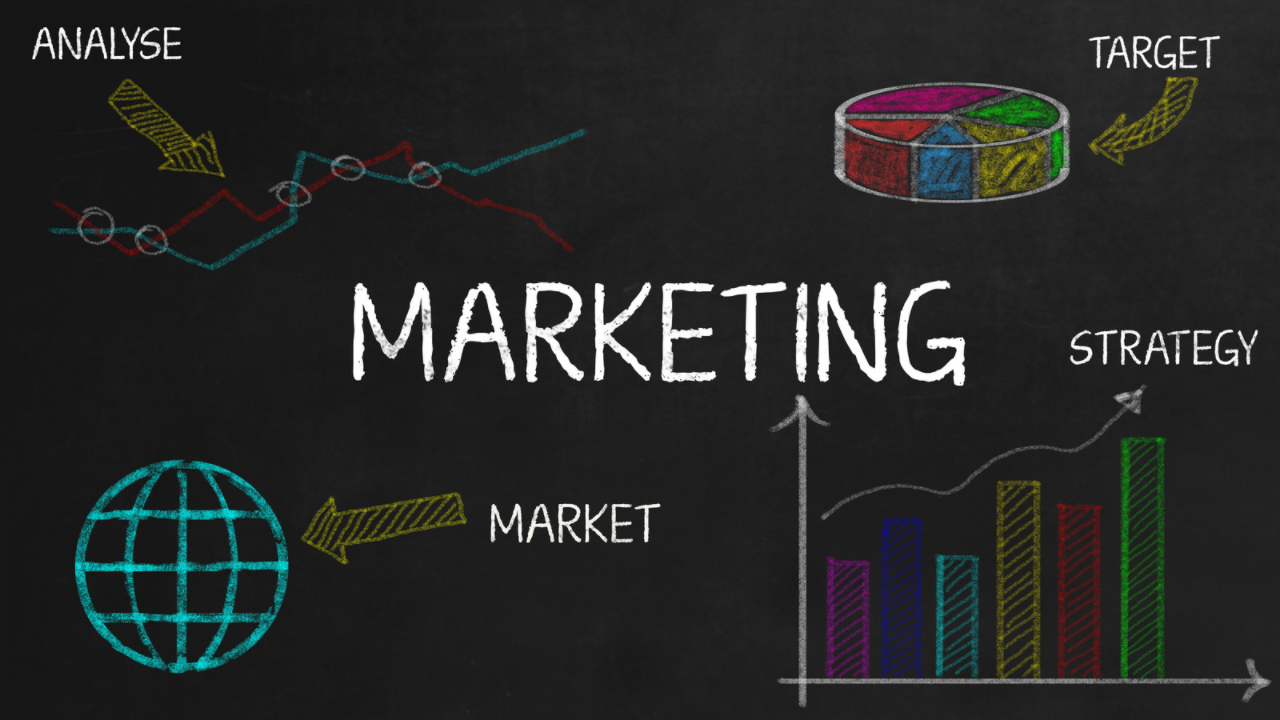
5 Unconventional Marketing Trends That Could Help Your Company
In a world where consumers are constantly bombarded by advertisements, it can be challenging to stand out and capture their attention. As a result, companies are always seeking innovative ways to market their products and services. This is where unconventional marketing trends come into play. By thinking outside the box and implementing strategies that are not commonly used, companies can differentiate themselves from their competitors and create a unique brand identity.
In this article, we will explore five unconventional marketing trends that could revolutionize your company’s strategy. From social media influencers to virtual reality experiences, these trends have the potential to take your marketing efforts to the next level and capture the attention of even the most discerning consumer. So, let’s dive in and see how your company can benefit from these game-changing marketing techniques.
Table of Contents
ToggleUnconventional Marketing – What Is It?
Unconventional marketing, also known as guerilla marketing, refers to any marketing strategy that is unconventional or nontraditional. This can include anything from flash mobs to street art to social media stunts. The goal of unconventional marketing is to create a buzz and generate word-of-mouth advertising. By doing something unexpected or unconventional, companies can capture the attention of consumers and create a lasting impression.
While unconventional marketing may seem risky, it can be highly effective. The key is to understand your target audience and what will resonate with them. By creating a unique experience or message, you can differentiate your brand from competitors and create a loyal following.
Trend #1: Experiential Marketing
Experiential marketing is a type of marketing that immerses consumers in a brand experience. This can include anything from pop-up shops to interactive displays to live events. The goal of experiential marketing is to create a memorable experience that will leave a lasting impression on consumers.
One example of experiential marketing is the pop-up shop. Pop-up shops are temporary retail spaces that are designed to create a unique shopping experience. They can be used to launch new products, test market demand, or simply create buzz around a brand. Pop-up shops can be located anywhere from a busy street corner to a high-end mall, and they can be designed to fit any budget.
Another example of experiential marketing is live events. Live events can include anything from product launches to concerts to charity fundraisers. The goal of a live event is to create an experience that will engage consumers and create a lasting impression.
Experiential marketing can be highly effective because it creates a personal connection between consumers and the brand. By immersing consumers in a brand experience, companies can create an emotional connection that goes beyond traditional advertising.
Trend #2: Influencer Marketing
Influencer marketing is a type of marketing that uses social media influencers to promote a brand or product. Social media influencers are individuals who have a large following on social media platforms such as Instagram, YouTube, or Twitter. They may buy genuine followers for Instagram on Twicsy or similar platforms to boost their following and build credibility. These influencers are often experts in their field and are trusted by their followers.
Influencer marketing can be highly effective because it allows companies to reach a highly targeted audience. By partnering with an influencer who has a similar target audience, companies can promote their product or service to a group of individuals who are already interested in their niche.
One example of influencer marketing is sponsored content. Sponsored content is when a brand pays an influencer to create content that promotes their product or service. This can include anything from a sponsored post on Instagram to a YouTube video review.
Another example of influencer marketing is brand ambassador programs. Brand ambassador programs are when brand partners with an influencer over an extended period. The influencer promotes the brand’s products or services on an ongoing basis and often receives exclusive deals or offers in return.
Influencer marketing can be highly effective because it allows companies to reach a highly targeted audience. By partnering with an influencer who has a similar target audience, companies can promote their product or service to a group of individuals who are already interested in their niche.
Trend #3: SMS Marketing
SMS marketing is a type of marketing that uses text messaging to promote a brand or product. SMS marketing can be highly effective because it allows companies to reach consumers directly on their mobile devices with the use of SMS marketing software.
One example of SMS marketing is text message coupons. Text message coupons are when a company sends a coupon or discount code to a consumer’s mobile device via text message. The consumer can then redeem the coupon in-store or online.
Another example of SMS marketing is text message alerts. Text message alerts are when a company sends a text message to a consumer’s mobile device to alert them of a new product launch or sale.
SMS marketing can be highly effective because it allows companies to reach consumers directly on their mobile devices. This is especially important because many consumers are constantly on their phones and may not see traditional advertising.
Trend #4: Virtual and Augmented Reality Marketing
Virtual and augmented reality marketing is a type of marketing that uses virtual or augmented reality technology to promote a brand or product. Virtual reality technology allows consumers to immerse themselves in a 3D environment, while augmented reality technology overlays digital images in the real world.
One example of virtual and augmented reality marketing is virtual reality experiences. Virtual reality experiences can be used to give consumers a virtual tour of a product or service. For example, a car company could create a virtual reality experience that allows consumers to take a virtual test drive of their latest model.
Another example of virtual and augmented reality marketing is augmented reality apps. Augmented reality apps can be used to create interactive experiences that overlay digital images in the real world. For example, a furniture company could create an augmented reality app that allows consumers to see how a piece of furniture would look in their home before making a purchase.
Virtual and augmented reality marketing can be highly effective because it allows consumers to fully experience a product or service before making a purchase. This can help to build trust and create an emotional connection with the brand.
Trend #5: User-Generated Content Marketing
User-generated content marketing is a type of marketing that uses content created by consumers to promote a brand or product. User-generated content can include anything from social media posts to customer reviews.
One example of user-generated content marketing is social media contests. Social media contests can be used to encourage consumers to create and share content related to a brand or product. For example, a clothing company could create a contest that asks consumers to share photos of themselves wearing their latest collection.
Another example of user-generated content marketing is customer reviews. Customer reviews can be used to promote a product or service by showcasing the experiences of other consumers. Positive reviews can help to build trust and encourage other consumers to make a purchase.
User-generated content marketing can be highly effective because it allows companies to leverage the power of social proof. By showcasing the experiences of other consumers, companies can build trust and create an emotional connection with their target audience.
How to Implement Unconventional Marketing in Your Strategy
Implementing unconventional marketing in your strategy requires a deep understanding of your target audience and what will resonate with them. It also requires a willingness to take risks and try new things.
One way to implement unconventional marketing in your strategy is to start small. Try experimenting with a low-cost, low-risk campaign to see what works and what doesn’t. This will allow you to refine your strategy and build momentum over time.
Another way to implement unconventional marketing in your strategy is to partner with experts in the field. This could include social media influencers, event planners, or virtual reality developers. By partnering with experts, you can ensure that your campaigns are executed effectively and efficiently.
Measuring the Success of Unconventional Marketing
Measuring the success of unconventional marketing can be challenging because it often involves creating a lasting impression rather than immediate results. However, several metrics can be used to measure the success of unconventional marketing.
One metric is social media engagement. By tracking likes, comments, and shares, you can gauge the level of engagement that your campaign is generating.
Another metric is website traffic. By tracking website traffic before and after a campaign, you can determine whether your campaign is driving traffic to your website.
Finally, sales can also be used as a metric. While unconventional marketing may not always lead to immediate sales, it can help to build brand awareness and create an emotional connection with your target audience.
Case Studies of Companies Who Successfully Implemented Unconventional Marketing
One example of a company that successfully implemented unconventional marketing is Red Bull. Red Bull created the Red Bull Stratos campaign, which involved sending a man to the edge of space in a high-altitude balloon. The campaign generated over 50 million views on YouTube and helped to cement Red Bull’s reputation as a brand that pushes boundaries.
Another example of a company that successfully implemented unconventional marketing is Airbnb. Airbnb created the Airbnb Open campaign, which involved creating a pop-up hotel in the middle of downtown Paris. The campaign generated over 15 million impressions on social media and helped to build awareness of Airbnb’s brand and services.
Conclusion
Unconventional marketing is an effective way to differentiate your brand from competitors and create a lasting impression on consumers. By thinking outside the box and implementing strategies that are not commonly used, companies can capture the attention of even the most discerning consumer. Whether it’s experiential marketing, influencer marketing, SMS marketing, virtual and augmented reality marketing, or user-generated content marketing, there are a variety of unconventional marketing trends that can revolutionize your company’s strategy. So, go ahead and think outside the box – you never know what kind of impact it may have on your brand.


